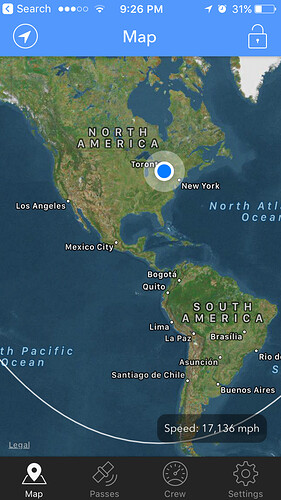Editor’s Note: Dave Michal won the Summer 360° Picture Contest with his ISS Flyover submission. Congratulations to Dave and thank you to everyone who entered for posting some many great ideas and images!
Who am I?
My name is Dave. I am a tech enthusiast that has always had a keen interest in cool photos. I started with an early Kodak Digital Cameras. Digital made tinkering and being creative possible for amateurs to play around and have instant feedback. Moving through Canon handhelds, Ricoh Rebel, to GoPro cameras and now onto a Ricoh Theta S.
The Ricoh Theta S has opened up a whole new realm of photos for me. I love everything the Theta series can do. The Ricoh Theta is the first camera that I have been able to really capture photos of space with. Below is a photo I took in Honey Harbour, Ontario, Canada on the weekend. The results absolutely floored me that I could capture the Milky Way in the photo. I hope you try your camera on some space photography and I hope some of the info below inspires and motivates you to give it a shot as well.
How to know when the International Space Station (ISS) will flyover
NASA provides “Spot The Station” email notifications of when the space station will be overhead. Signing up for email notifications at https://spotthestation.nasa.gov/ will provide you with about 12 hours notice of when to look up. As an iOS user, I also have the “ISS Finder” app on my phone. This app allows the user to set alarms of when the space station will be overhead and customize settings for optimal viewings and passes.
Each of these services provide : start time, duration, end time, start altitude, max altitude, end altitude, starting direction, max direction, and end direction of a flyover. Attached is a picture from the ISS Finder app for an upcoming pass. It isnt near North America this week, however when it does pass with a good opportunity to capture it, you will likely have more opportunities the following nights.
This information provided allows the user to know which direction to face to find the ISS and what plane in degrees to be looking to view the ISS. After a few passes, it is pretty easy to find the ISS quickly in the sky. The ISS is different than other man-made objects you may observe in the sky as it does not blink and moves across the sky quickly. The ISS is visible because it is reflecting the sun’s light down to us on earth.
How I take photos of the sky
I use a light stand that I purchased from eBay for about $40CDN. It expands to 200cm or 6.5 feet. In retrospect, I would not hesitate to spend a few more bucks on a sturdier light stand. However the one I am using works great and provides the appropriate height for day and night photos to be far enough from the ground to provide a realistic perspective for viewers.
I play with different settings from long exposures to medium exposures with interval composite settings. My 3rd submission had a setting of ISO 400, exposure lenght of 1/4 on interval composite setting. If I was shooting this shot again, id likely lengthen the exposure time to 1-2 seconds as my next try.
Learn more about interval composite setting:
"Interval composite shooting combines continuously shot images so that only the bright areas remain.
Ricoh recommends that you use a tripod or some other method to stabilize the camera when you want to take shots of the night sky from a fixed position and record the path of the moon and stars in the sky, or other similar situations.”
https://theta360.com/en/support/manual/s/content/settings/settings_01.html
Finding dark sky locations can help to bring out the milky way. However the space station is fairly easy to capture even in the most urban of areas.
I also use an app called Exif Photos on iOS to remind me of the settings of a photo and also if I want to edit photos in other apps with filters I can put the metadata back into the photo to allow 360 viewing.
You Can Do It Yourself!
I am by no means a professional photographer. I like to play with digital photography and see what I can capture. I have started a facebook page dedicated to local 360 photography in Hamilton, Ontario, Canada and the surrounding area. You can find my facebook page at Redirecting.... Recently I photographed an old art deco theatre that is going to be restored to its original state. The photos provide the before and after. http://buildingmagic.ca/gallery/
Any folks who have some keen insights on night time sky photography I encourage you to add your thoughts to this thread so that together we can capture incredible night sky photography. My next projects are likely to look at time lapses of the starry skys.
Thank you to the Unofficial Guide and Jesse Casman for being a fantastic resource for Theta owners. This site has been amazing. Thank you to Oppkey, Inc. for the sponsoring the Theta Unofficial Guide Summer 360 Picture Challenge and thank you for honouring me with the grand prize. I look forward to finding more creative ways to use my 360 camera.

